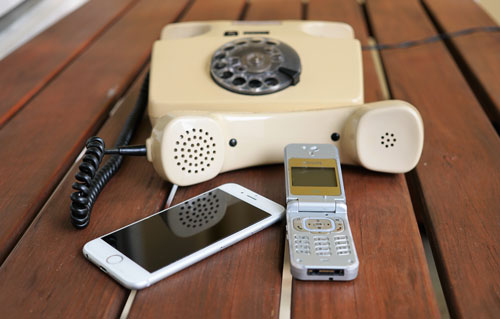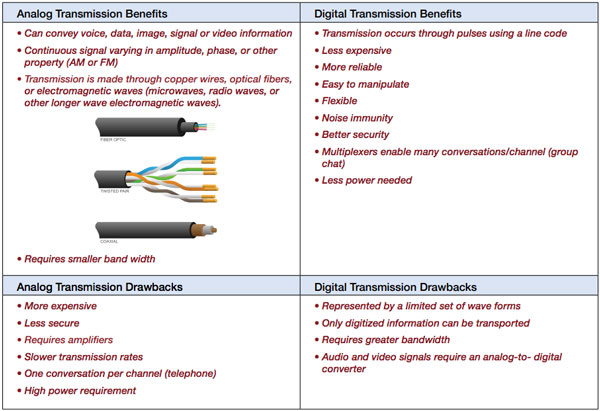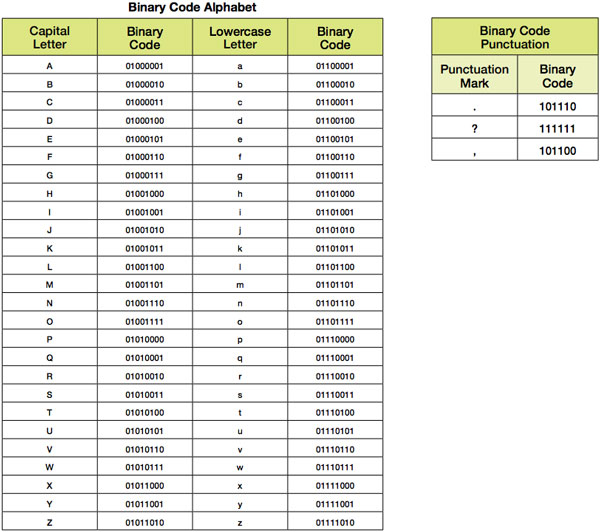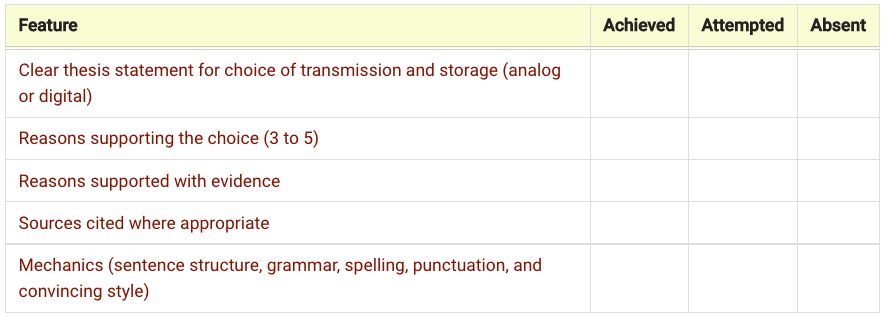9-12 High School
This introductory activity provides students with an organizational tool to classify benefits and drawbacks of analog and digital information transmission after researching both types of transmission. Next, they will construct an argument for the transmission and storage selection method selected and present a written argument to a hypothetical business. Upon completing their comparison and argument, students will simulate digital transmission by translating their name and a simple sentence into binary code.
What makes these phones different from each other?

What are the advantages of using digital information transmission?
PE HS-PS4-2. Evaluate questions about the advantages of using a digital transmission and storage of information.
Asking Questions and Defining Problems
PS4.A: Wave Properties
Stability and Change
No PPE is required for the activity.
Copy or upload student activity handouts. There is no disposal of materials. You may wish to copy and laminate the binary alphabet for other activities.
Examples of Student Responses



1. Construct an argument, citing evidence, that a large corporation should use either analog or digital information storage and transmission.
Student answers will vary. See a possible rubric below.

2. Look at the uppercase binary alphabet. What patterns can you identify?
All letters start with 010 and are 8 characters long. The last 5 digits change by one in each place as each letter changes.
3. Look at the lowercase binary alphabet. What patterns can you identify?
All letters start with 011 and are 8 characters long. The last 5 digits change by one in each place as each letter changes.
4. Write your name in binary code.
Amy = 010000010110110101111001
5. Write a short sentence in binary code and give it to a classmate for translation. Check it for correctness.
Student answers will vary. You may wish to put restrictions on sentence length if time is a concern.
6. Look at the phones in the phenomenon again. Based on what you learned, determine the information transmission and storage method for each phone. Include your reasoning.
Tan phone is analog transmission and no storage. There is a cord attached to the phone that must go to a wall jack and the receiver is attached by a cord to the phone base. The flip phone and flat cell phone are digital transmission and storage. There are no cords and pictures, voice, video, and text information can be stored on the phone.
*Next Generation Science Standards® is a registered trademark of Achieve. Neither Achieve nor the lead states and partners that developed the Next Generation Science Standards were involved in the production of this product, and do not endorse it.
Get the latest news, free activities, teacher tips, product info, and more delivered to your inbox.